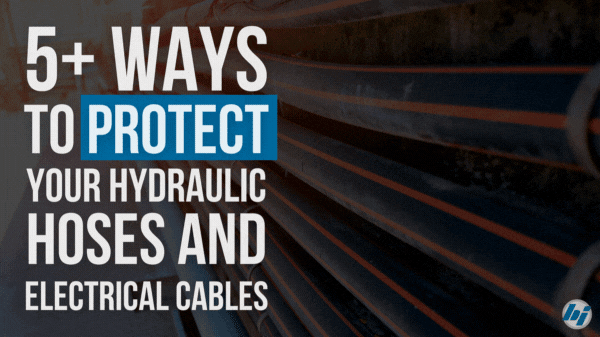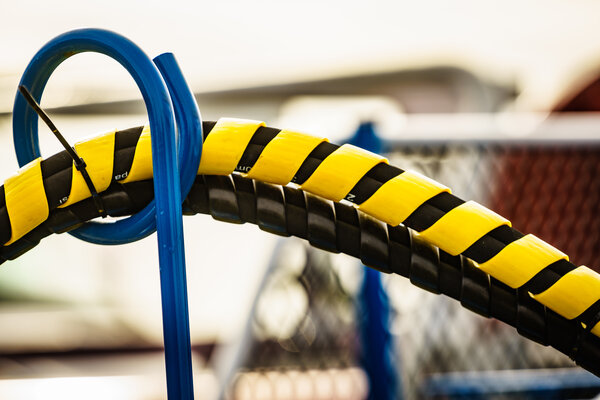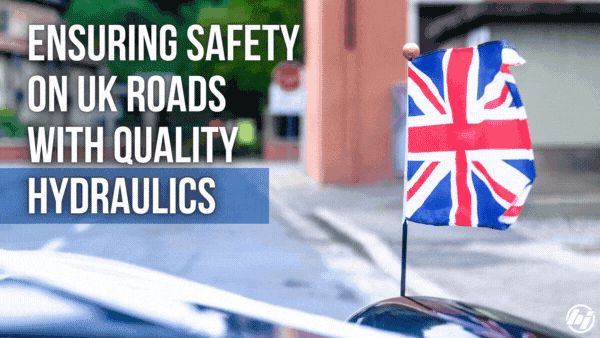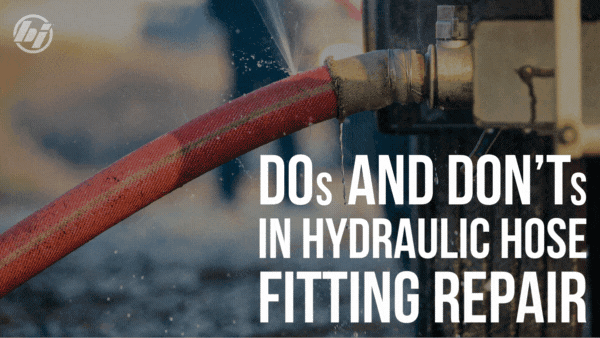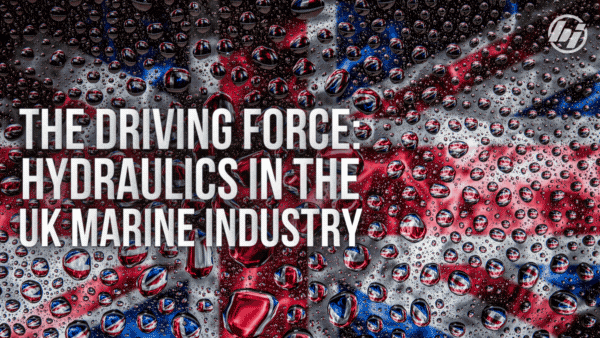When
a hydraulic hose fails, it can burst and produce a ripple effect that can cause costly equipment damage and downtime; a pinhole leak can spray hot hydraulic fluid causing personal injury.
Hydraulic
hose assemblies typically operate
in
uncontrolled and unprotected environments, where tough and difficult conditions require safeguards against hose failure.
Hoses
are often exposed to vibration and continuous movement on industrial or mobile equipment.
This
is due to rubbing against metal parts, causing wear and abrasion.
There
can also be flying debris, weld spatter or hot metal chips that can cut or burn into the hose.
Any
of these situations can wear away at hose covers, exposing the wire reinforcement to moisture and dirt that can ultimately lead to catastrophic failure.
Hydraulics, often hidden beneath the surface, have a significant role in modern road infrastructure and vehicles. One of the most critical applications is in the vehicle's braking system, where high-quality brake components like calipers, master cylinders and brake lines are essential for reliable stopping.
However, hydraulics go beyond braking systems. You can see them in vehicle suspension, traffic management and road maintenance equipment. By incorporating hydraulics into these areas, road safety in the U.K. has seen significant improvements, with fewer accidents occurring since the technology's implementation.
The British Imperial Units of Measure was the conventional system of weights and measures in the United Kingdom from 1824 until 1965, when the metric system was adopted. Though metric units are primarily used in most areas of industry and commerce, the imperial system is still used on roadway speed limits, some beverage containers and pipe fittings. Perhaps a contradiction in terms, but your Aston Martin DB9 is just under 5 metres long, though it’s allowed to travel 70 miles per hour on the motorway.
Although the imperial thread sizes of BSP hydraulic fittings are still the most popular in the UK, the preponderance of metric fittings in Europe as made its mark in the UK’s industrial sector.
Hydraulic hose fittings are integral to hydraulic systems, connecting hoses to cylinders, pipes, valves, pumps, actuators and joining hoses together. Selecting and installing the correct components allows the system to be airtight, free from leaks and maintain system integrity.
Leaking hydraulic fluid can be the cause of system failures and negative environmental impacts. System downtime due to leaks is very costly. Across the globe, more than 370 million litres of hydraulic fluid leaks into the environment each year.
It's not uncommon for hydraulic fittings to be the source of system leaks. Leaks can come from improper fitting selection, installation, cracks, missing or damaged O-rings and many other causes. Repairing a fitting is not always as simple as replacing it. It's first important to identify why the leak is occurring. Was the fitting improperly torqued, is it leaking from a bad O-ring, has dirt entered the threads, is it cracked, or is the source of the leak from somewhere else entirely? There are a number of ways fittings can leak and there are some basic steps for determining the problem and fixing it, as well as things NOT to do.
As
an island nation, the
British
Royal
Navy
dominated the seas from the 18th to the early 20th century.
During
this
period,
Britain
controlled much of the world's trade and possessed the ability to easily move supplies and troops
in
wartime.
The
UK's modern marine industry began to take shape
as
advancements
in
the
shipbuilding sector took center stage
in
the 19th century, with hydraulic technology playing a pivotal role
in
both building and operating ships, covering numerous applications that drive the marine industry forward.
Today,
the UK has more than
120
commercial ports administered by five major organizations and hundreds of shipbuilding companies led by companies such
as
BAE
Systems
plc and
Babcock
International
Group
plc.
Hydraulics
have been around
for
thousands of years, likely originating
in
Egypt
and
Mesopotamia
.
By
the 3rd century BC, positive displacement water pumps
-
known
as
Archimedes' Screw
, were used
for
raising water
in
applications such
as
removing water from the hold of large ships.
In
Europe's
early modern period of the 17th century,
French
physicist and mathematician
Blaise
Pascal
made significant advancements
in
hydrodynamics, developing what we know today
as
Pascal's Law
, which he applied to the development of the first hydraulic press.
Growing concerns surrounding climate change and environmental deterioration highlight the urgency to adopt sustainable practices. The manufacturing sector, in particular, has been advised to transition towards cleaner processes due to its impact on resource consumption and greenhouse gas emissions. Over the past few years, the UK's manufacturing industry demonstrated progress in embracing eco-friendly initiatives for long-term sustainability.
As
with
the rest of the world, entertainment
in
the
UK
is
a major industry,
with
a
2022
value of nearly £
12
billion.
There
are two primary sectors
:
first, music, performance and visual arts, estimated at £
11.5
billion.
This
includes cinema, stage theatre along
with
music festivals and concerts.
Second
is
amusement and theme parks, which were reported separately at a value of £
909
million.
This
is
clearly an enormous market where hydraulics play a major role.
Here
are the primary entertainment industries which rely
on
hydraulics
:
Recent Posts
Some additional information in one line
Subscribe to Blog Notifications
Keep up to date with the latest from the Brennan Blog by subscribing to blog notifications below. Every month we will send you a brief digest of the latest posts with a link where you can read more.

